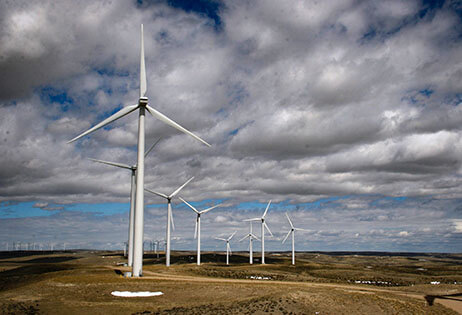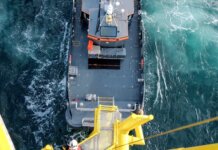In support of bird protection, Duke Energy Renewables has ordered 24 IdentiFlight units to be installed at its Top of the World Windpower Project in Wyoming.
According to Duke Energy, the system from IdentiFlight International blends artificial intelligence with high-precision optical technology to detect eagles and prevent them from colliding with turbine blades. Duke Energy Renewables claims to be the first wind operator to commercially deploy the technology.
Tim Hayes, environmental director of Duke Energy Renewables, says, “Since Top of the World began operations, we have tested a variety of techniques and technologies to reduce impacts to eagles. The IdentiFlight system has shown great promise for effectively reducing eagle collisions.”
The Top of the World site has been a part of IdentiFlight’s development from the beginning: Earlier versions have previously been installed and modified at the facility. The 200 MW wind farm, which began commercial operations in October 2010, consists of 44 Siemens and 66 GE turbines on 17,000 acres of land.
“Duke Energy Renewables has been an amazing partner throughout the testing and development of the IdentiFlight technology and has proven to be in the forefront of the industry in addressing this critical issue,” states Tom Hiester, president of IdentiFlight International. “Avian collisions with turbine blades have been an impediment to growth in the wind industry. IdentiFlight was developed to address this problem and promote the successful coexistence of avian wildlife and wind energy.”
Recently, IdentiFlight units underwent third-party, independent testing at Top of the World during elevated eagle activity. The testing focused on the system’s ability to detect and classify golden eagles and other large raptors within a time frame that supports the use of informed curtailment to minimize collision risk. The full report is expected to be published in a scientific journal early next year.
“The real-world testing conducted by The Peregrine Fund and the American Wind Wildlife Institute (AWWI) produced compelling results that validated IdentiFlight’s accuracy and effectiveness,” adds Hayes. “It is a great addition to the many strategies we employ to protect wildlife and their habitats.”
Automatic detection and species determination occur within seconds for birds flying within a one-kilometer hemisphere around an IdentiFlight tower. If an eagle’s speed and flight path indicate risk of collision, an alert is generated to shut down that specific wind turbine. By providing highly targeted, informed and objective curtailment decisions, the technology prevents unnecessary and costly interruptions and conserves protected species, the companies say.




